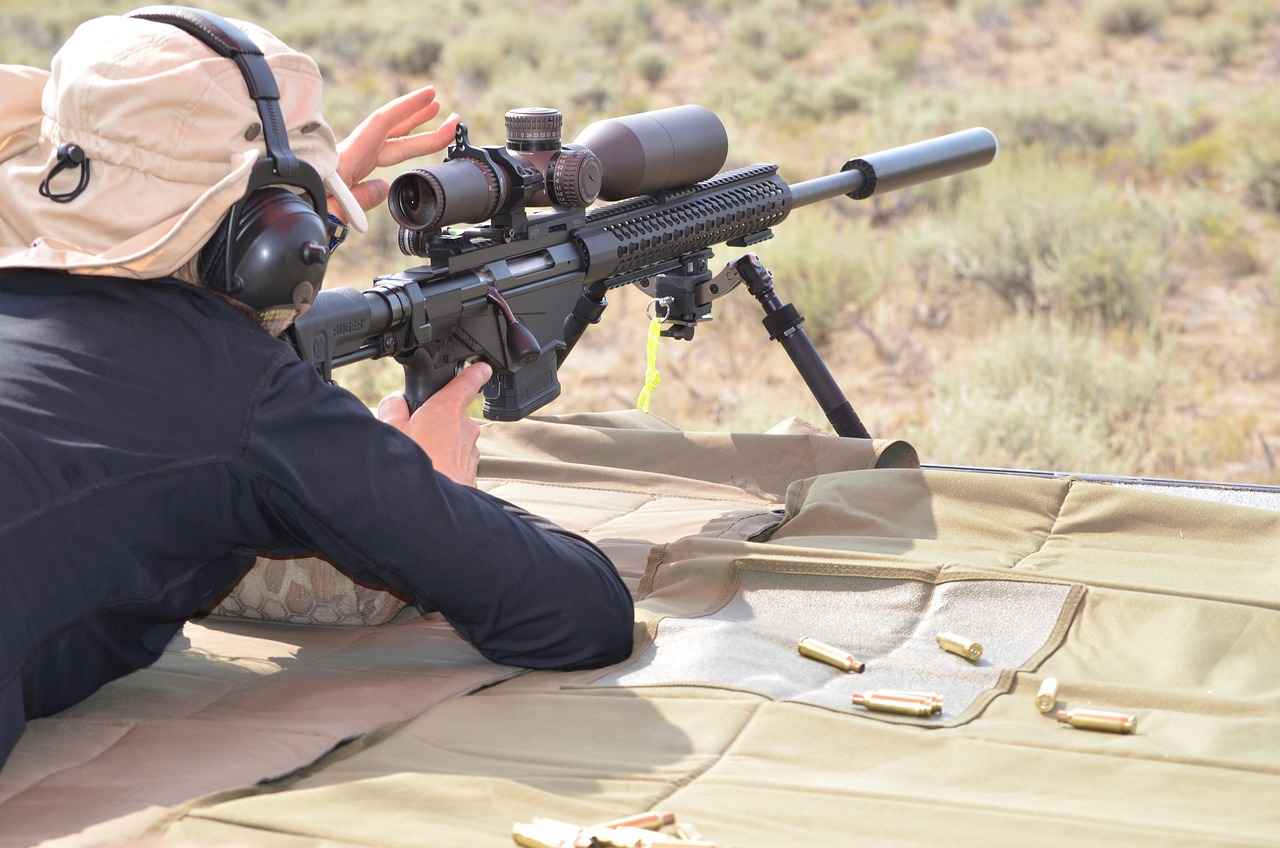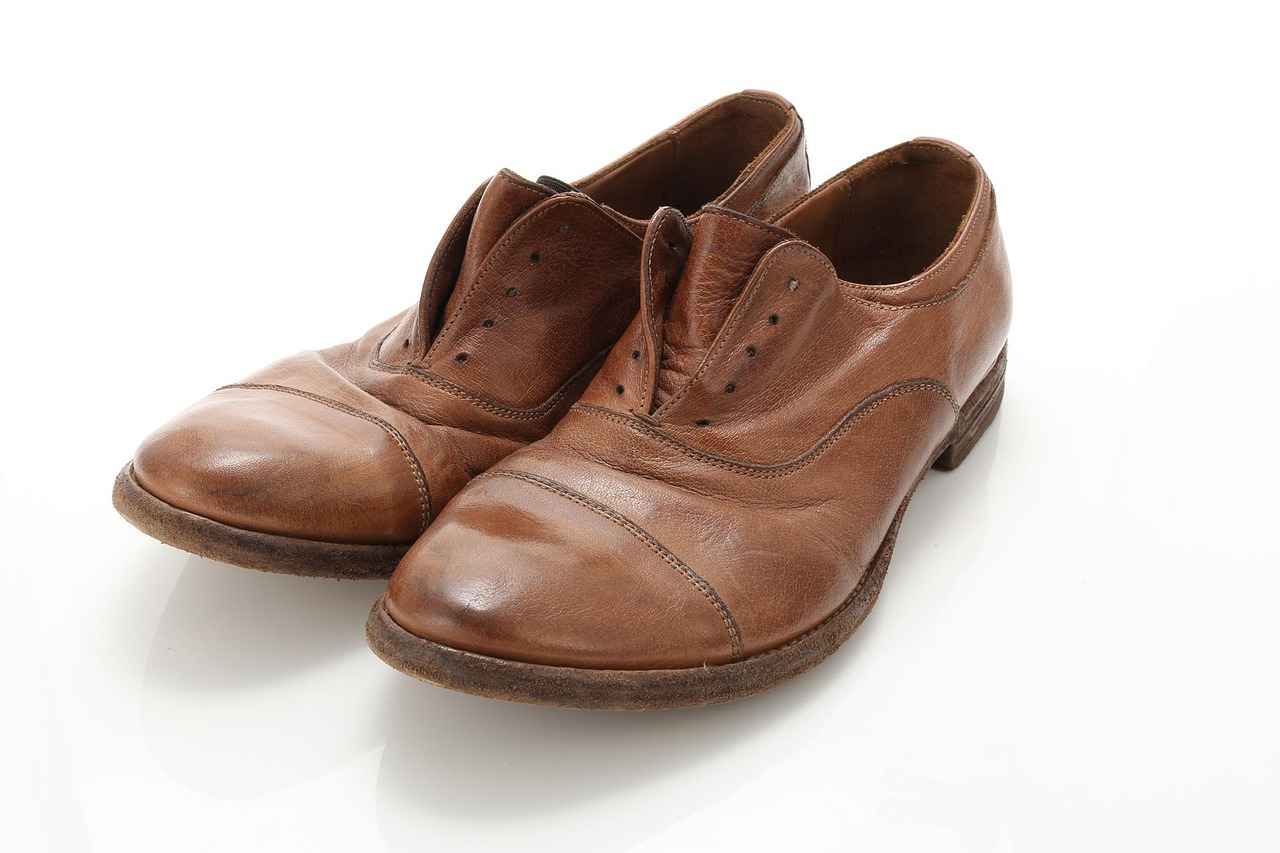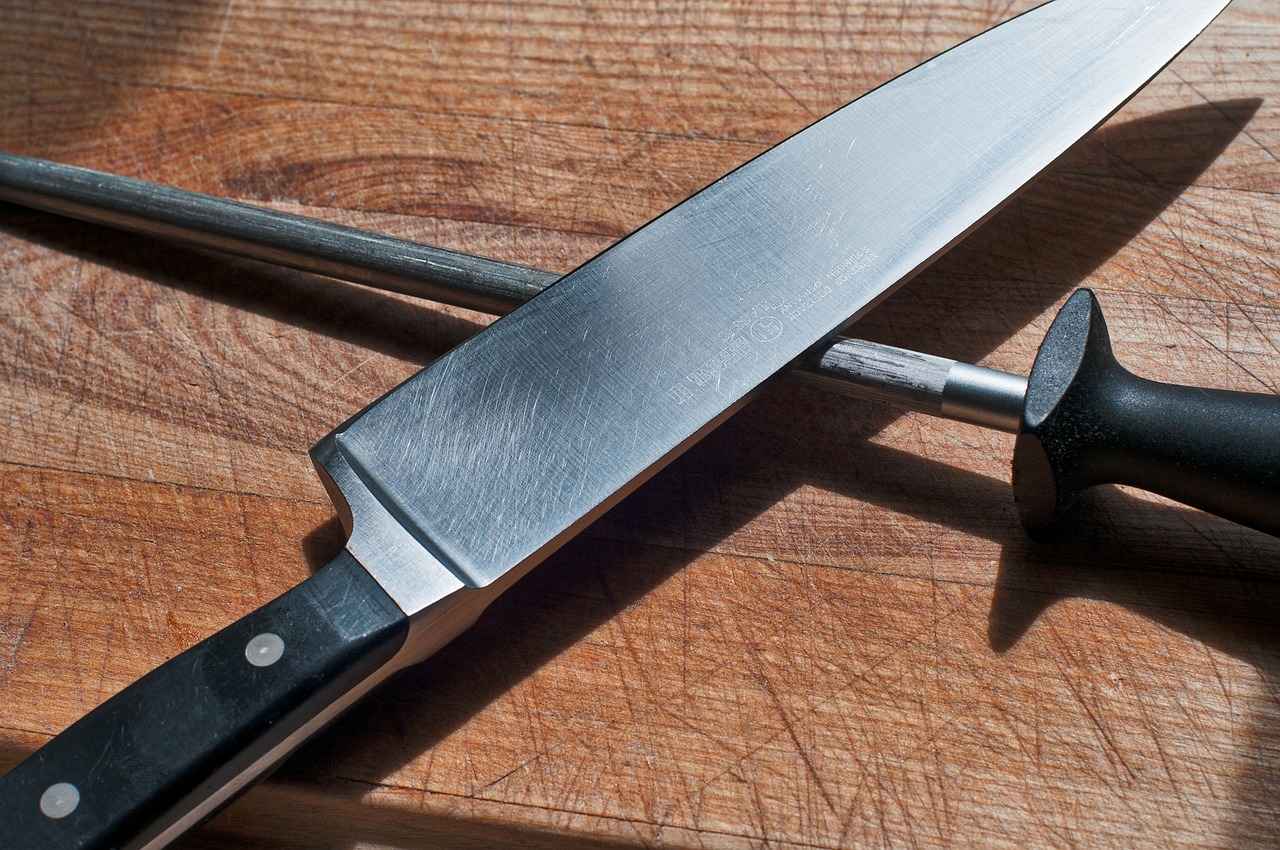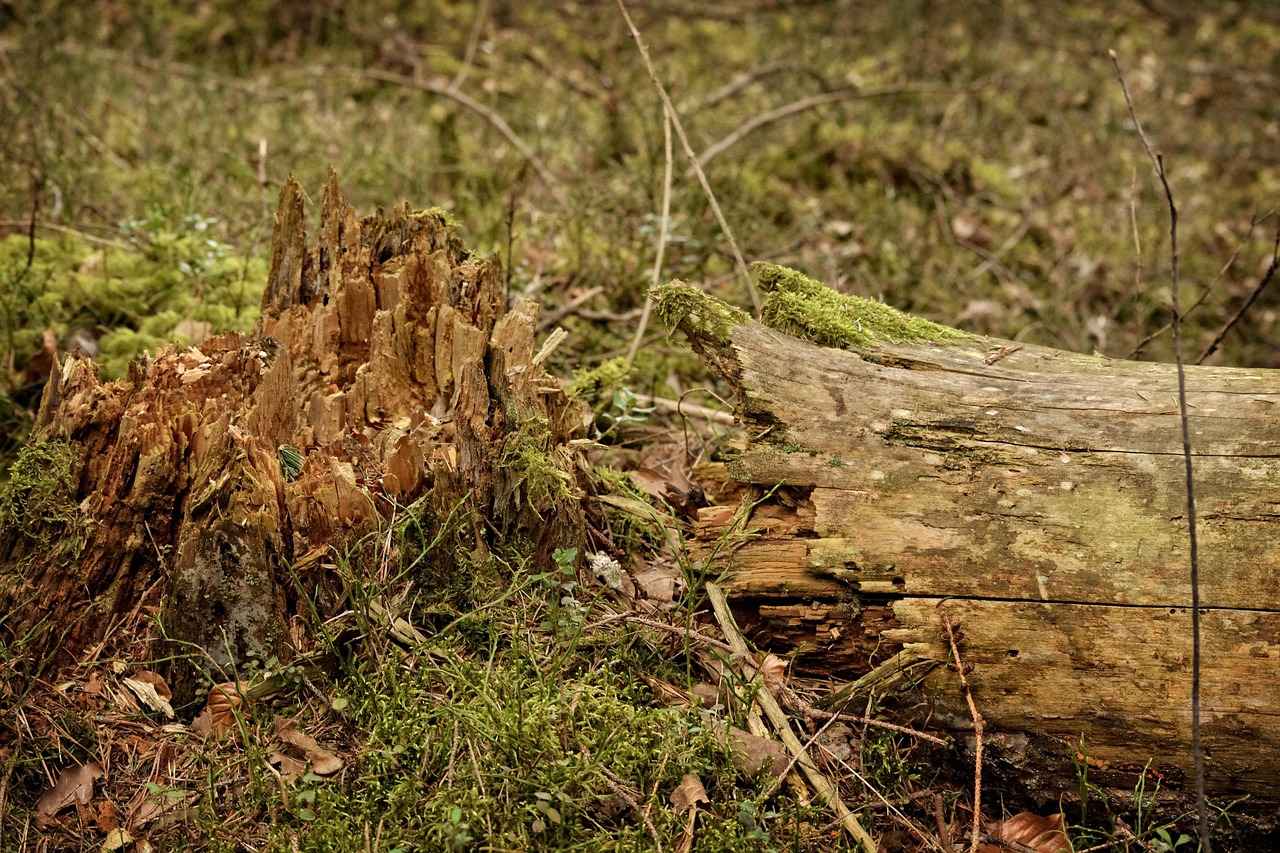Sharpening a straight razor is an essential skill for anyone who values a close and comfortable shave. This comprehensive guide aims to equip beginners with the necessary techniques, tools, and tips to achieve a keen edge, resulting in a superior shaving experience. Understanding the process not only enhances the performance of your razor but also prolongs its lifespan.
Sharpening your straight razor is crucial for maintaining its optimal performance. A well-sharpened blade provides a smooth and irritation-free shave, while a dull blade can lead to nicks, cuts, and discomfort. Regular sharpening ensures that you can achieve a close shave with minimal effort, making your grooming routine more efficient and enjoyable.
To effectively sharpen a straight razor, you will need the right tools. The essential equipment includes:
- Hones: Used for the initial sharpening of the blade.
- Strops: Used for polishing the edge after honing.
- Honing Compounds: Optional products that can enhance the sharpening process.
When selecting a hone, it is important to understand the differences between natural and synthetic hones. Natural hones, such as Belgian coticules, offer unique properties that can produce a fine edge. In contrast, synthetic hones provide consistency and durability, making them ideal for beginners.
Sharpening effectiveness is largely dependent on grit levels. The grit scale ranges from coarse to fine, with lower numbers indicating coarser abrasives and higher numbers indicating finer ones. Beginners should start with a medium grit hone (around 1000-3000) before progressing to finer grits (6000 and above) for polishing the edge.
Stropping is a vital step in the sharpening process. It realigns the edge of the blade and removes any microscopic burrs. To strop effectively:
1. Hold the strop taut.2. Place the blade flat against the strop.3. Pull the blade away from the edge, applying light pressure.4. Repeat on both sides of the blade.
Follow these steps for effective sharpening:
- Prepare Your Razor: Clean and inspect your razor for any damage.
- Choose Your Hone: Select the appropriate hone based on your razor’s condition.
- Begin Sharpening: Use smooth, even strokes on the hone, maintaining the correct angle (around 20 degrees).
- Test the Edge: Carefully test the sharpness with a hair or a thumb pad.
To improve your sharpening skills, avoid these common pitfalls:
- Over-Sharpening: This can damage the blade. Recognize signs of over-sharpening, such as a rounded edge.
- Neglecting the Strop: Many beginners underestimate the importance of stropping, which is essential for maintaining a sharp edge.
Proper maintenance extends the life of your straight razor. Here are some tips:
- Cleaning: Clean your razor thoroughly after each use to prevent rust.
- Drying: Ensure your razor is completely dry before storage.
- Storage: Store your razor in a protective case to prevent damage.
By following this guide, beginners can confidently sharpen their straight razors, ensuring a superior shaving experience every time.

Why is Sharpening a Straight Razor Important?
When it comes to traditional shaving, the straight razor stands as a symbol of craftsmanship and precision. However, to fully experience the benefits of this timeless tool, understanding the importance of sharpening your straight razor is essential. A well-maintained razor not only enhances your shaving experience but also extends the life of the blade.
Why is Sharpening Crucial? The primary reason sharpening is vital is that it directly impacts the performance of your razor. A dull blade can lead to uncomfortable shaves, resulting in skin irritation and razor burn. In contrast, a sharp razor glides effortlessly over the skin, providing a smooth and clean cut. This not only enhances comfort but also reduces the number of passes needed, minimizing the risk of nicks and cuts.
Moreover, regular sharpening contributes to the longevity of your straight razor. Dull blades require more pressure during shaving, which can lead to uneven wear and tear, ultimately shortening the lifespan of the blade. By maintaining a sharp edge, you ensure that your razor remains effective and durable for years to come.
How Often Should You Sharpen? The frequency of sharpening largely depends on your shaving habits. If you shave daily, you may need to sharpen your razor more often than someone who shaves less frequently. A good rule of thumb is to assess the blade’s performance regularly. If you notice tugging or pulling during a shave, it’s time to bring out your honing tools.
Enhancing Your Shaving Technique A sharp straight razor not only improves comfort but also allows you to refine your shaving technique. With a keen edge, you can achieve precise angles and strokes, resulting in a closer shave. This level of control can boost your confidence and make the shaving process more enjoyable.
Conclusion In summary, understanding the significance of sharpening your straight razor is crucial for maintaining its performance and longevity. A sharp blade ensures a smooth and comfortable shave, enhances your technique, and prolongs the life of your razor. By investing time in proper sharpening techniques, you can enjoy the full benefits of this classic shaving tool.

What Tools Do You Need to Sharpen a Straight Razor?
When it comes to sharpening a straight razor, selecting the right tools is essential for achieving a sharp and effective edge. The tools you choose can significantly impact the quality of your shave and the longevity of your razor. In this section, we will delve into the essential equipment required for sharpening, including hones, strops, and honing compounds, to ensure you have everything you need for a successful sharpening process.
- Hones: These are abrasive surfaces used to sharpen the blade. Hones come in various types and grits, each serving a specific purpose.
- Strops: Used after honing, strops help polish the edge and align the blade’s microscopic teeth, ensuring a smooth shave.
- Honing Compounds: These are applied to strops to enhance their effectiveness, providing additional abrasiveness for a finer edge.
When selecting a hone, it’s crucial to understand the differences between natural and synthetic hones. Natural hones, such as Belgian coticules, are known for their unique properties and ability to produce a fine edge. On the other hand, synthetic hones offer consistency and durability, making them a popular choice for many enthusiasts.
Grit levels play a significant role in the sharpening process. Coarse grits (around 200-600) are ideal for repairing damaged blades, while medium grits (1000-3000) are used for general sharpening. Finally, fine grits (8000 and above) are essential for polishing the edge to perfection. Knowing how to select the right grit for your needs is vital for effective sharpening.
Stropping is a critical step in the sharpening process that many beginners overlook. Using a strop after honing helps to refine the edge and remove any burrs left from the honing process. This step not only enhances the sharpness but also prolongs the life of your razor. A well-maintained strop, often made of leather, can make a significant difference in the quality of your shave.
Honing compounds are abrasive pastes or powders that can be applied to strops to increase their effectiveness. These compounds come in various grits and can further refine the edge of your razor. Using a honing compound can elevate your stropping routine, providing that extra polish needed for a superior shaving experience.
In summary, having the right tools for sharpening your straight razor is crucial for achieving a sharp edge and ensuring a comfortable shave. By understanding the functions of hones, strops, and honing compounds, you can make informed choices that will enhance your straight razor experience.
Choosing the Right Hone
When it comes to sharpening straight razors, is a critical step that can significantly influence the outcome of your sharpening process. With a variety of hones available, understanding their distinct characteristics is essential for achieving a finely honed edge.
There are two main categories of hones: natural and synthetic. Each type offers unique advantages and caters to different sharpening needs.
Natural hones are sourced from geological formations and have been used for centuries. A popular example is the Belgian coticule, known for its ability to produce a sharp and smooth edge. These hones contain natural abrasives that can vary in grit depending on the specific stone. While they can provide a superior finish, they may require a bit more skill to use effectively due to their variability.
Synthetic hones, on the other hand, are manufactured to provide consistent grit levels and performance. They are often made from materials like alumina or silicon carbide. A significant advantage of synthetic hones is their durability and uniformity, making them an excellent choice for beginners. These hones can be specifically designed for various sharpening tasks, allowing users to select the best option for their needs.
When deciding between natural and synthetic hones, consider the following factors:
- Experience Level: Beginners might find synthetic hones easier to work with due to their predictability.
- Desired Finish: If you seek a specific edge quality, natural hones can provide a unique finish that some users prefer.
- Budget: Natural hones can be more expensive, while synthetic options are often more budget-friendly.
Another crucial aspect of honing is understanding grit levels. Hones are categorized by their grit, which indicates the coarseness of the abrasive material. A lower grit number (e.g., 200-600) is suitable for repairing damage or reshaping the blade, while higher grit numbers (e.g., 8000-12000) are ideal for achieving a polished finish. Selecting the appropriate grit is essential for effective sharpening.
Regardless of the type of hone you choose, mastering your honing technique is vital. Proper angle and pressure are key to achieving a sharp edge. Ensure that you maintain a consistent angle throughout the process, typically around 15 to 20 degrees for straight razors. Additionally, using light pressure allows for better control and reduces the risk of damaging the blade.
In summary, selecting the right hone—whether natural or synthetic—depends on your sharpening needs, experience level, and personal preferences. By understanding the characteristics of each type and the importance of grit levels, you can enhance your sharpening skills and achieve optimal results for your straight razor.
Natural Hones vs. Synthetic Hones
When it comes to sharpening straight razors, one of the most critical decisions is choosing the right hone. The two primary categories are natural hones and synthetic hones, each offering distinct advantages and characteristics. Understanding these differences can significantly impact your sharpening experience and the final edge of your razor.
Natural hones, such as Belgian coticules, are formed from geological processes over thousands of years. They possess unique properties that can enhance the sharpening process. The grit structure of natural hones varies, often leading to a polished edge that is highly sought after by enthusiasts. These hones can provide a gentle honing experience that is less aggressive on the blade, making them ideal for maintaining a razor’s edge.
- Unique Composition: Each natural hone has its own composition, leading to varied sharpening results.
- Less Aggressive: Natural hones tend to wear down the blade more gently, preserving the razor’s integrity.
- Natural Lubrication: Many natural hones have a built-in lubrication property that enhances the sharpening process.
Synthetic hones, on the other hand, are engineered for consistency and durability. They are made from materials designed to provide a uniform grit size, which can be beneficial for beginners who require predictable results. Common synthetic hones include diamond plates and ceramic hones, both of which are known for their longevity and effectiveness in sharpening.
- Consistency: Synthetic hones provide a uniform sharpening experience, making them easier to use for beginners.
- Durability: They are less prone to wear and tear, allowing for prolonged use without significant degradation.
- Wide Range of Grits: Synthetic hones are available in various grit levels, catering to different sharpening needs.
Choosing between natural and synthetic hones depends largely on your sharpening preferences and experience level. If you are a beginner seeking consistent results, synthetic hones may be the better option. However, if you are looking for a more traditional approach and appreciate the unique qualities of natural stones, then natural hones like Belgian coticules could be your best bet.
Ultimately, the decision should align with your specific needs and the type of edge you wish to achieve. Many experienced sharpeners often have both types of hones in their toolkit, allowing them to switch based on the task at hand. Experimenting with both can lead to a deeper understanding of how each type affects the blade and can help you refine your sharpening technique.
Grit Levels Explained
Understanding grit levels is crucial for anyone looking to sharpen a straight razor effectively. The grit scale is a measurement of the coarseness or fineness of the sharpening medium, which directly influences the sharpening process and the quality of the edge produced. This section will delve into the grit scale, its various levels, and how each impacts the sharpening of your razor.
The grit scale typically ranges from coarse to fine, with each level serving a specific purpose in the sharpening process. Here’s a breakdown of the common grit levels:
| Grit Level | Range (in microns) | Purpose |
|---|---|---|
| Coarse | 1000 – 3000 | Used for repairing nicks and reshaping the blade edge. |
| Medium | 4000 – 6000 | Ideal for sharpening and refining the blade’s edge. |
| Fine | 8000 – 12000 | Perfect for polishing and achieving a razor-sharp finish. |
When selecting a hone for sharpening your straight razor, it is essential to choose the appropriate grit level based on the condition of your razor. For instance, if your razor has significant wear or damage, starting with a coarse hone will allow you to reshape the blade effectively. Once the edge is restored, transitioning to a medium hone will refine the edge, followed by a fine hone to achieve the ultimate sharpness.
Moreover, the grit level you choose will also affect the shaving experience. A razor sharpened with a finer grit will glide smoothly over the skin, providing a comfortable and close shave. In contrast, a razor that has been sharpened with a coarse grit may leave the skin feeling irritated and could result in a less enjoyable shaving experience.
It is also worth noting that the sharpening technique plays a significant role in the outcome. Regardless of the grit level, maintaining the correct angle and pressure during the sharpening process is vital. A consistent angle helps ensure that the edge is evenly sharpened, leading to better performance and longevity of the razor.
In conclusion, understanding the grit levels and their respective purposes is fundamental to mastering the art of sharpening a straight razor. By selecting the right grit for your needs and employing effective sharpening techniques, you can achieve a keen edge that enhances your shaving experience. Remember to assess your razor’s condition before beginning the sharpening process, and always prioritize the proper techniques to ensure the best results.
Stropping Techniques for a Finishing Touch
Stropping is an essential part of the sharpening process that many beginners often overlook. It serves as the final step in achieving a razor-sharp edge on your straight razor, ensuring an optimal shaving experience. This section will delve into effective stropping techniques, allowing you to maintain a polished and refined edge on your blade.
To understand the importance of stropping, consider that it not only aligns the microscopic teeth of the blade but also removes any burrs created during the sharpening process. This meticulous attention to detail can make a significant difference in the performance of your razor.
Stropping involves drawing the razor across a strop, typically made of leather or canvas, to refine the edge. The primary goal is to smooth out the edge and prepare it for a close shave. Without proper stropping, even the sharpest blade can result in a rough and uncomfortable shave.
When it comes to stropping, the type of strop you use can greatly influence the outcome. Here are some factors to consider:
- Material: Leather strops are popular due to their durability and effectiveness. Canvas strops can also be beneficial, especially for initial honing.
- Width: A wider strop allows for a more stable stropping motion, which can lead to better results.
- Condition: Ensure your strop is in good condition. A worn-out strop can lead to poor performance.
To achieve the best results, follow these stropping techniques:
- Preparation: Before you start, ensure your strop is taut and free of any debris. This will provide a clean surface for stropping.
- Angle: Hold the razor at a 15 to 20-degree angle against the strop. This angle is crucial for effective stropping.
- Motion: Use a smooth, even motion, drawing the blade away from the edge. Avoid pressing too hard; light pressure is sufficient.
- Flip Technique: When you reach the end of the strop, flip the razor over without lifting it off the strop. This technique helps maintain the angle and prevents damage.
- Repetition: Aim for about 10 to 15 strokes on each side of the blade. Consistency is key to achieving a polished edge.
Even experienced users can make mistakes while stropping. Here are some common pitfalls to avoid:
- Using Excessive Pressure: Applying too much pressure can dull the blade instead of refining it.
- Incorrect Angle: Holding the razor at the wrong angle can lead to ineffective stropping and potential blade damage.
- Neglecting the Strop: Failing to maintain your strop can diminish its effectiveness over time.
In summary, effective stropping is crucial for maintaining a sharp and polished edge on your straight razor. By following the right techniques and avoiding common mistakes, you can significantly enhance your shaving experience. Remember, a well-stropped razor not only provides a closer shave but also prolongs the life of your blade.

How to Sharpen a Straight Razor: Step-by-Step Guide
Sharpening a straight razor is an essential skill for anyone looking to maintain a sharp edge for a superior shaving experience. This step-by-step guide will walk you through the entire sharpening process, ensuring you achieve optimal results while prolonging the life of your razor. With the right techniques and tools, you can transform a dull blade into a precision instrument.
Before you begin sharpening, ensure you have the necessary tools at your disposal:
- Honing Stone: Choose between natural or synthetic stones based on your preference.
- Strop: A leather strop is crucial for polishing the edge after honing.
- Honing Compound: Optional, but can enhance the stropping process.
- Water or Oil: Depending on your hone’s requirements, have either ready to use.
Begin by inspecting your straight razor for any visible damage or rust. Clean the blade thoroughly using warm water and a soft cloth. Ensure that it is completely dry before proceeding to the next step. Proper preparation is key to achieving a sharp edge.
Place your honing stone on a stable surface. If you’re using a water stone, soak it in water for about 10-15 minutes. For oil stones, apply a thin layer of honing oil. Hold the razor at a 20-degree angle against the stone.
1. Begin with the heel of the blade.2. Apply light pressure and push the blade forward, moving towards the tip.3. Lift the blade and return to the starting position without dragging it back.4. Repeat this motion 5-10 times on one side before switching to the other side.
After honing, it’s time to polish the edge using a strop. This step removes any burrs and aligns the edge for a smoother shave:
- Apply a light layer of honing compound if desired.
- Hold the strop taut and place the razor on it at a slight angle.
- Use the same motion as with the hone, moving from the heel to the tip.
- Strop each side 10-15 times.
To ensure your razor is sharp, perform a simple test:
- Gently run the blade across a piece of hair or paper.
- If it cuts cleanly without snagging, your razor is ready for use.
As you sharpen your straight razor, be mindful of these common mistakes:
- Over-Sharpening: Excessive honing can damage the blade. Stick to the recommended number of strokes.
- Neglecting the Strop: Always strop after honing for optimal sharpness.
- Using Too Much Pressure: Let the weight of the blade do the work to avoid damaging the edge.
By following these steps, you will not only sharpen your straight razor effectively but also enhance your shaving experience. Regular maintenance and proper techniques will ensure your razor remains in excellent condition for years to come.
Preparing Your Razor for Sharpening
When it comes to sharpening a straight razor, proper preparation is not just a suggestion—it’s a necessity. Before diving into the sharpening process, it’s crucial to ensure that your razor is in optimal condition. This preparation phase involves cleaning and inspecting your razor, which sets the stage for a successful sharpening session.
Cleaning your razor removes any residue, oils, or debris that may have accumulated from previous shaves. This step is vital because even the smallest particle can affect the sharpening process and lead to an uneven edge. To clean your razor:
- Use warm water and a mild soap to gently wash the blade.
- Make sure to dry it thoroughly to prevent rust.
- Inspect the pivot area and the handle for any build-up that could interfere with the blade’s movement.
After cleaning, the next step is to inspect your razor carefully. Look for any signs of damage or wear, such as:
- Chips or nicks: These can significantly impact the sharpening process and the quality of your shave.
- Rust or corrosion: If you notice these, it’s essential to address them before sharpening.
- Blade alignment: Ensure that the blade is properly aligned with the spine. Misalignment can lead to uneven sharpening.
Having the right tools on hand can make the preparation process smoother. Here are some essentials:
- Soft cloth: For drying and polishing the blade.
- Magnifying glass: To closely inspect the blade for imperfections.
- Cleaning solution: A gentle soap or specialized razor cleaner.
Creating an organized and clean workspace is also crucial. Clear a flat surface and ensure that you have good lighting. This will help you see any imperfections on the blade and make the cleaning process more efficient.
By taking the time to properly clean and inspect your straight razor, you are not only ensuring a more effective sharpening session but also prolonging the life of your tool. Remember that a well-maintained razor leads to a superior shaving experience. So, don’t rush this important step; it’s the foundation upon which your sharpening success is built.
The Sharpening Process Explained
Sharpening a straight razor is a crucial skill for anyone looking to enhance their shaving experience. Understanding the sharpening process can seem daunting, but with the right techniques and tools, it becomes a straightforward task. This guide will provide you with clear instructions on how to use your chosen hone effectively, ensuring you achieve a razor-sharp edge.
Before diving into the sharpening process, it’s essential to understand the type of hone you are using. Hones are typically categorized into two types: natural and synthetic. Natural hones, such as coticules, offer unique properties that can enhance the sharpening process, while synthetic hones provide consistent results. Knowing the differences will help you choose the right one for your needs.
Preparation is key to successful sharpening. Start by ensuring your razor is clean and free from any debris. Inspect the blade for any nicks or irregularities; these should be addressed before sharpening. Proper preparation will set the stage for an effective sharpening session.
- Position the Hone: Place your hone on a stable surface. Ensure it doesn’t move during sharpening.
- Angle the Blade: Hold the razor at a consistent angle, typically between 15 to 20 degrees, against the hone.
- Start Sharpening: Gently push the blade across the hone, applying light pressure. Use a smooth, even motion from the heel to the tip of the blade.
- Alternate Sides: After several strokes on one side, flip the razor and repeat the process on the other side. This ensures an even edge.
- Check for Sharpness: Periodically check the edge by carefully running your finger along the blade (perpendicular to the edge) to feel for sharpness.
- Finish with a Strop: Once you achieve the desired sharpness, finish with a strop to refine the edge and align the blade.
As you embark on your sharpening journey, be aware of common pitfalls that can hinder your progress:
- Over-Sharpening: Applying too much pressure or sharpening too frequently can wear down the blade unnecessarily. Aim for balance.
- Inconsistent Angles: Maintaining a consistent angle is crucial. Variability can lead to uneven sharpening and a dull edge.
- Neglecting the Strop: Many beginners overlook stropping, which is vital for achieving a polished finish. Always include this step in your sharpening routine.
To further enhance your sharpening skills, consider the following tips:
- Practice Regularly: Like any skill, sharpening improves with practice. Regular sessions will build your confidence and technique.
- Use Proper Lighting: Good lighting will help you see the blade clearly, ensuring you maintain the correct angle and pressure.
- Stay Patient: Sharpening takes time and precision. Rushing can lead to mistakes. Take your time to ensure quality results.
By following these detailed instructions and avoiding common mistakes, you will be well on your way to mastering the sharpening process. With practice and dedication, you’ll achieve a sharp edge that enhances your shaving experience.

What Common Mistakes Should You Avoid?
Identifying and avoiding common mistakes can significantly improve your sharpening skills. This section outlines frequent errors and how to steer clear of them.
When sharpening a straight razor, many beginners unknowingly make mistakes that can hinder their progress and affect the quality of their shave. Understanding these pitfalls is essential for honing your technique and achieving a superior edge. Below are some of the most common mistakes and tips on how to avoid them:
- Over-Sharpening: One of the most prevalent errors is over-sharpening the blade. This occurs when you apply too much pressure or spend too much time on the hone. Over-sharpening can lead to a damaged edge and may even necessitate professional repair. To avoid this, focus on light, consistent strokes and regularly check the blade’s sharpness.
- Incorrect Angle: Maintaining the right angle while sharpening is crucial. A common mistake is using an angle that is either too steep or too shallow. The ideal angle for sharpening a straight razor typically ranges between 15 to 20 degrees. Use a guide or a protractor to ensure you are consistent with your angle.
- Neglecting the Strop: Many beginners overlook the importance of stropping after sharpening. Stropping realigns the edge of the blade and removes any burrs that may have formed during the honing process. Always incorporate stropping into your routine to maintain a keen edge.
- Using the Wrong Hone: Selecting the appropriate hone is vital. Some beginners use hones that are too coarse or too fine for their specific needs. Familiarize yourself with the different types of hones available and choose one that suits your razor and sharpening goals.
- Skipping the Cleaning Process: Before sharpening, it is essential to clean your razor. Failing to do so can introduce debris and oils onto the hone, affecting the sharpening process. Always clean your razor with warm water and a mild soap before you begin.
- Ignoring Maintenance: After sharpening, many users neglect the necessary maintenance of their tools. It is crucial to clean your hone and strop after each use to prolong their lifespan and effectiveness. Regular maintenance will ensure that your tools remain in optimal condition.
By being aware of these common mistakes, you can significantly enhance your sharpening skills and ensure a better shaving experience. Remember, practice and patience are key. As you refine your technique, you’ll find that avoiding these pitfalls will lead to a sharper, more effective straight razor.
Over-Sharpening: A Pitfall to Avoid
When it comes to sharpening a straight razor, over-sharpening is a common mistake that many beginners make. Understanding the implications of this error is essential for maintaining the integrity and longevity of your blade. This section will delve into how to recognize the signs of over-sharpening and provide practical tips to avoid this pitfall.
What is Over-Sharpening? Over-sharpening occurs when excessive material is removed from the blade during the sharpening process. This can lead to a number of issues, including a weakened edge, an uneven blade profile, and even permanent damage. A straight razor is designed to have a specific geometry, and altering this through over-sharpening can compromise its performance.
Signs of Over-Sharpening
- Uneven Edge: If you notice that your blade has a wavy or uneven edge, it may be a sign that you have sharpened too much in certain areas.
- Loss of Sharpness: Ironically, over-sharpening can lead to a dull blade. If your razor feels less sharp than before, it could be due to excessive honing.
- Visible Wear: Look for signs of wear or damage on the blade, such as chips or nicks, which can result from aggressive sharpening techniques.
How to Avoid Over-Sharpening
1. Use the Right Technique: Employ light pressure and maintain a consistent angle while sharpening. 2. Limit Sharpening Frequency: Only sharpen your razor when necessary; frequent honing can lead to over-sharpening.3. Monitor Blade Condition: Regularly inspect your blade for signs of wear or dullness and address these issues promptly.4. Use a Strop: Instead of honing too often, use a strop to maintain the edge. Stropping realigns the edge without removing excessive material.
Conclusion Recognizing the signs of over-sharpening and adopting preventive measures is vital for the longevity of your straight razor. By being mindful of your sharpening technique and frequency, you can ensure that your blade remains sharp and effective, providing you with a smooth and comfortable shave. Remember, a well-maintained razor is a key component of a superior shaving experience.
Neglecting the Strop
When it comes to maintaining your straight razor, stropping is often an overlooked yet essential step. Many beginners tend to focus solely on sharpening their blades, forgetting that the finishing touch of stropping is crucial for achieving a truly sharp and effective edge. In this section, we will explore why neglecting the strop can lead to a subpar shaving experience and how proper stropping techniques can enhance the longevity and performance of your razor.
Stropping involves running your razor along a leather strap, which helps to realign the microscopic teeth of the blade’s edge. This process not only polishes the edge but also removes any burrs that may have formed during sharpening. By neglecting to strop, you risk leaving your razor with a jagged edge, which can result in irritation and nicks during shaving.
Proper stropping can significantly enhance the quality of your shave. A well-stropped razor glides effortlessly across the skin, providing a smoother and closer shave. In contrast, a neglected blade may tug at the hair, leading to discomfort and an uneven cut. This can be particularly frustrating for beginners who are still mastering their technique.
- Using Too Much Pressure: Applying excessive force while stropping can damage the blade and the strop itself. A gentle touch is all that is needed to achieve optimal results.
- Incorrect Angle: Maintaining the proper angle during stropping is crucial. Typically, a 15 to 20-degree angle is recommended to ensure the blade makes effective contact with the strop.
- Inconsistent Motion: A smooth, consistent motion is key to effective stropping. Rushing or using erratic movements can lead to uneven results.
To ensure your razor remains in top condition, follow these steps for effective stropping:
- Prepare Your Strop: Ensure your strop is clean and free of any debris. Hang it securely to avoid any movement during stropping.
- Position the Razor: Hold the razor at the correct angle, with the spine against the strop. Start at the heel of the blade and move towards the tip.
- Use Gentle Pressure: Apply light pressure as you draw the blade across the strop, maintaining a consistent speed.
- Flip and Repeat: After stropping one side, carefully flip the razor and repeat the process on the other side.
As a general rule, you should strop your razor before each shave. This practice not only maintains the edge but also helps to keep your blade in optimal condition. Additionally, incorporating stropping into your routine can extend the time between sharpening sessions, saving you both time and effort in the long run.
In summary, neglecting the strop can lead to a myriad of issues that affect the overall performance of your straight razor. By understanding the significance of stropping and implementing proper techniques, you can enhance your shaving experience and prolong the life of your razor. Remember, a little attention to detail goes a long way in achieving the perfect shave.

How to Maintain Your Straight Razor After Sharpening?
Maintaining your straight razor is crucial for ensuring its longevity and performance. After you have sharpened your razor, proper care is essential to keep it in optimal condition. This section outlines practical tips and techniques for maintaining your straight razor post-sharpening, ensuring you enjoy a smooth and effective shave every time.
Regular maintenance not only prolongs the life of your straight razor but also enhances your shaving experience. A well-maintained razor provides a smoother shave, reduces the risk of nicks and cuts, and ensures that the blade remains sharp for longer periods.
After each shave, it is essential to clean your razor thoroughly. Here are some steps to follow:
- Rinse the Blade: Immediately after use, rinse the blade under warm water to remove hair and shaving cream.
- Use a Soft Cloth: Gently wipe the blade with a soft cloth to avoid scratches.
- Dry Completely: Ensure the blade is completely dry to prevent rust. You can use a hairdryer on a low setting for quick drying.
Proper storage is vital for maintaining the integrity of your straight razor. Consider the following storage options:
- Razor Case: Use a dedicated case to protect your razor from dust and moisture.
- Magnetic Strips: If you prefer to display your razor, magnetic strips can keep it securely in place while avoiding contact with other surfaces.
- Airtight Containers: For long-term storage, airtight containers can keep moisture at bay.
Regular inspections can help you catch potential issues early. Here’s what to look for:
- Check for Rust: Inspect the blade for any signs of rust or corrosion.
- Examine the Edge: Look for any chips or dull spots that may need attention.
- Handle Condition: Ensure the handle is secure and free from cracks.
Investing in the right products can significantly enhance your maintenance routine:
- Razor Oil: A few drops of mineral oil can help keep the blade lubricated and rust-free.
- Stropping Paste: Using quality stropping paste can help maintain the sharpness of your blade.
- Cleaning Solutions: Specialized cleaning solutions can help remove any stubborn residues without damaging the blade.
Establishing a regular maintenance routine is key. It is advisable to:
- Clean your razor after every shave.
- Inspect your razor weekly for any signs of wear.
- Oil your blade every month to prevent rust.
In conclusion, maintaining your straight razor is an essential practice that ensures its performance and longevity. By following these tips and incorporating a structured maintenance routine, you can enjoy a superior shaving experience for years to come.
Cleaning and Drying Your Razor
Maintaining your straight razor is essential for ensuring its longevity and performance. Proper cleaning and drying techniques can prevent rust and corrosion, which are common issues faced by razor users. Here, we will explore the best practices for keeping your razor in top condition.
- Why Clean Your Razor? Regular cleaning eliminates hair, soap residue, and skin oils that can accumulate on the blade, potentially leading to rust.
- Tools You Need: A soft cloth, warm water, mild soap, and a small brush (like a toothbrush) are essential for thorough cleaning.
Step-by-Step Cleaning Process:
- Rinse the Razor: Start by rinsing your razor under warm water to remove any loose hair and debris.
- Apply Soap: Use a small amount of mild soap on your soft cloth or brush. Gently scrub the blade and handle to remove any remaining dirt.
- Rinse Again: Rinse the razor thoroughly to ensure all soap is removed, as leftover soap can cause irritation during shaving.
- Drying: Use a soft, dry cloth to wipe the blade and handle. Ensure no moisture remains, as water can lead to rust.
Best Drying Techniques: After cleaning, it’s crucial to dry your razor properly. Here are some effective methods:
- Pat Dry: Gently pat the blade dry with a soft cloth rather than rubbing it, which can dull the edge.
- Air Dry: Allow the razor to air dry completely in a well-ventilated area. Avoid placing it in a damp environment.
- Use a Hair Dryer: For a quick drying method, you can use a hair dryer on a low setting, keeping it at a safe distance from the blade.
Preventative Measures: To further protect your razor from rust and corrosion, consider the following:
- Oil the Blade: After drying, apply a thin layer of mineral oil or razor oil to the blade to create a protective barrier against moisture.
- Store Properly: Store your razor in a dry place, preferably in a case or on a stand that allows air circulation.
- Avoid Moisture: Always ensure your hands are dry when handling the razor, and avoid using it in a steamy bathroom.
By following these cleaning and drying techniques, you can significantly extend the life of your straight razor and ensure a smooth, comfortable shaving experience every time. Regular maintenance not only preserves the blade’s sharpness but also enhances your overall grooming routine.
Storage Solutions for Longevity
Proper storage of your straight razor is essential for ensuring its longevity and performance. When you invest in a quality straight razor, you want to protect that investment by storing it correctly. This section explores various storage solutions that can enhance the lifespan of your straight razor.
Storing your straight razor improperly can lead to damage, rust, and dullness. A well-stored razor not only maintains its sharp edge but also prevents unnecessary wear and tear. Understanding the importance of proper storage will help you keep your razor in optimal condition.
- Leather Sheath: A high-quality leather sheath offers excellent protection against scratches and environmental factors. The natural materials used in leather allow for breathability, reducing the risk of moisture buildup.
- Wooden Box: A wooden box with a soft lining can provide a stable environment for your razor. Ensure that the box is well-constructed to prevent any movement that could lead to blade damage.
- Magnetic Razor Holder: If you prefer a more modern approach, a magnetic razor holder can be an attractive and functional option. It keeps your razor securely in place while allowing for easy access.
When storing your straight razor, consider the following tips:
- Clean and Dry: Always clean your razor thoroughly and let it dry completely before storage. This prevents rust and corrosion.
- Avoid Humidity: Store your razor in a low-humidity environment. Excess moisture can lead to rust, so consider using silica gel packs in your storage area.
- Keep Away from Other Sharp Objects: When storing your razor, ensure it is not in contact with other sharp objects that could dull its edge or cause damage.
Many individuals make common mistakes that can harm their straight razors:
- Storing Wet Razors: Never store your razor while it’s still wet. This can lead to rust formation and deterioration of the blade.
- Using Inadequate Storage: Avoid using flimsy or poorly designed storage solutions that do not provide adequate protection.
- Neglecting Regular Checks: Regularly check your storage area for any signs of moisture or damage to ensure your razor remains in top condition.
By implementing these storage solutions and practices, you can significantly enhance the lifespan of your straight razor. Remember, a well-maintained razor not only provides a superior shaving experience but also retains its value over time. Take the time to invest in proper storage, and your straight razor will reward you with years of service.
Frequently Asked Questions
- How often should I sharpen my straight razor?
It depends on how frequently you use it. If you shave daily, consider sharpening every few weeks. For occasional use, a monthly touch-up might suffice. Just remember, a sharp razor gives you the best shave!
- Can I use any hone for sharpening?
Not all hones are created equal! It’s crucial to choose a hone that fits your needs. Natural hones offer unique benefits, while synthetic ones provide consistency. Do a little research to find what works best for you!
- What’s the difference between stropping and honing?
Great question! Honing is about sharpening the blade’s edge, while stropping is more about refining it to achieve a polished finish. Think of honing as the initial cut and stropping as the final touch!
- Is it okay to use a leather strop?
Absolutely! A leather strop is actually one of the best tools for maintaining your razor’s edge. It helps realign the blade and keeps it sharp. Just remember to use it regularly!
- How can I prevent rust on my straight razor?
To keep rust at bay, always clean and dry your razor after use. Store it in a dry place, and consider using a light coat of oil for extra protection. A little care goes a long way!




